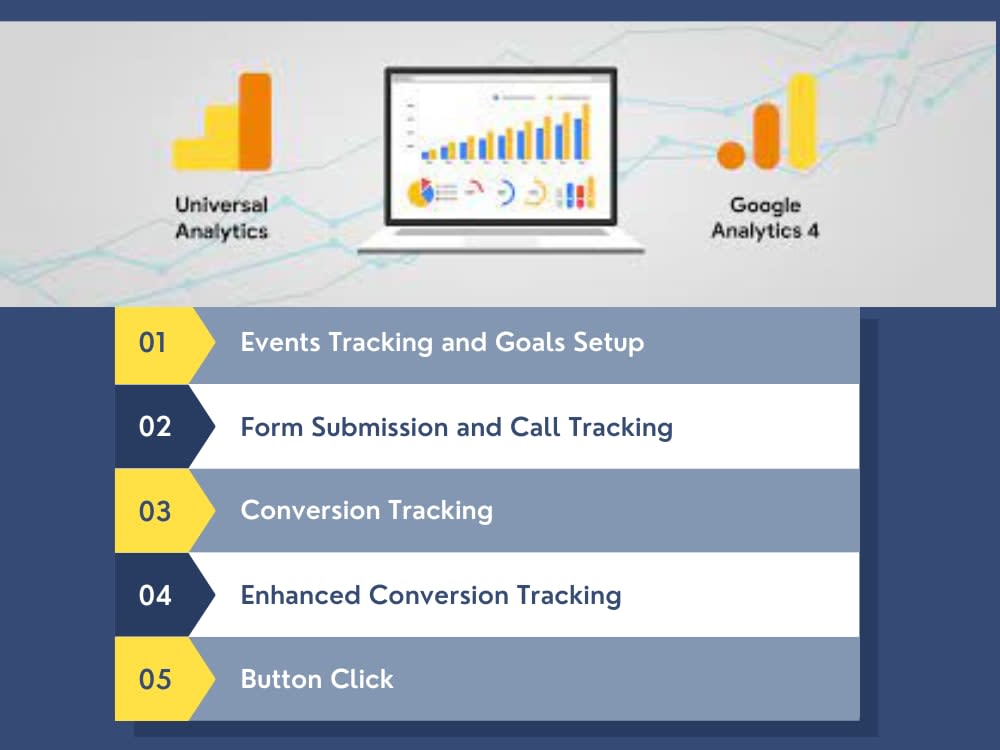Google Analytics Event Tracking for Beginners
Table of ContentsNot known Details About Google Analytics Event Tracking The Definitive Guide for Google Analytics Event TrackingFacts About Google Analytics Event Tracking RevealedLittle Known Questions About Google Analytics Event Tracking.Google Analytics Event Tracking - TruthsNot known Details About Google Analytics Event Tracking
If you're mosting likely to establish up event monitoring manually, after that you're going to need to add some extra code to the aspects you want to gather data from. The code you're going to function with will certainly look something such as this: There are four elements within that code bit that you're mosting likely to require to specify on your own: occasion, Group, occasion, Activity, occasion, Label and event, Worth.
As you can see, two of these are required (classification and action) while tag and value are optional. All of it depends upon the kind of info you desire relayed back to Google Analytics when a user clicks the specified element (Google Analytics Event Tracking). It will be much easier to define these parts if you analyse your website and determine which elements/actions you intend to track
9 Easy Facts About Google Analytics Event Tracking Described
Currently, you'll be asked to define the and and you'll wish to choose from the drop-down food selection that shows up when you click on. This will raise the exact same event monitoring elements we checked out earlier, which you'll require to load out. As soon as you've defined these, you can relocate down to the second box and select the trigger that will certainly terminate your tag.
On the following screen, you'll likewise have an area for calling your trigger and, if you click on package, you'll see a checklist of the various triggers you can select. In this case, we wish to select and afterwards pick the option below. You'll establish the trigger to just terminate when an element is clicked with a Link that consists of the.
Simple - Event tracking! Event monitoring provides you a picture of exactly how customers involve with your internet site and organization. Read on as we check out whatever try here you require to recognize, including what it is, why you must track events, exactly how to take care of events data, and various other pertinent FAQs you might have.
The smart Trick of Google Analytics Event Tracking That Nobody is Talking About
You can switch over between your event classifications, actions, and tags in the Leading Occasions report. This report is vital for excavating even more right into research on a certain occasion category. The Event Pages record presents the pages where occasions are triggered. In this section, we can analyze the top web pages that drive occasions.
It reveals you the course they take as they move from one event to the following and assists you to determine which web content engages your target market one of the most. Events in Google Analytics have four primary components. They are also a component of the event tracking code. Google Analytics utilizes these codes to track user communications and team them into event reports.
Then, select "Variables" > "Configure". A listing of the specifications you can track on your website is on the right. Under Clicks, Forms, and Video clips, double-check each criterion. After inspecting all necessary areas, you can click "X" to close the home window and return to the Review food selection on the left.
What Does Google Analytics Event Tracking Do?

If you have not done so, you might require to set up a variable in the Google Analytics Settings box. After this, enter your GA tracking ID in the Tracking ID area.
Your ID will be on top of the display. To do this, follow the next series of activities: After configuring the fields, go to this website pick the "Triggering" area. When configuring your new trigger, click the "+" button, then the "pencil" switch, after this hyperlink that pick your trigger kind. Tag your trigger and specify the conditions that lead to set off firing.
The Buzz on Google Analytics Event Tracking

When it familiarizes which sections and elements are guiding consumers via your conversion funnel, you still won't know. So, without occasion tracking, GA records will only count sees as single-page sessions, even if customers spend a whole lot of time on one web page and involve with it considerably (and a bounce).
Exactly how does occasion monitoring achieve this?Single-page sessions understood as bounces begin and end on the same page. Without event monitoring, GA will certainly classify a user's see as a bounce if they do not browse to another page, despite exactly how they connect with it. A video-rich web page can have a higher bounce rate if events are not tracked.
The Main Principles Of Google Analytics Event Tracking
For GA to take event hits into account when measuring bounce prices, you have to pick "Non-interaction occasion" as "False" during the GTM setup. Setting "occasion objectives" with occasion action is an outstanding way to keep an eye on user activities you value highly, such as brand-new lead entries or clicks on a contact us to activity.